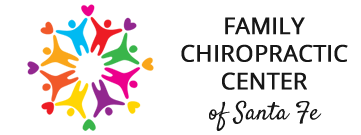What You Should Know About Your Blood Pressure
What Your Blood Pressure Says About You
Here’s how to get the most from your blood pressure readings.
Understanding Blood Pressure
Doctors have been measuring patients’ blood pressure, the force that blood exerts on the inside walls of your vessels — since the first sphygmomanometers (yes, that’s what blood pressure cuffs are called) were invented at the beginning of the 20th century.
Doctors are still finding new ways to glean information about your health from these numbers. British researchers recently found differences in blood pressure between the right and left arms might be a sign of vascular disease. Likewise, a difference in blood pressure when you’re lying down vs. standing up may indicate heart problems or blood vessel disease. Doctors can tell that from a painless test that takes only a few minutes.
The Basics: What Does Blood Pressure Mean
The most important thing to know about your blood pressure is whether or not it’s high. A blood pressure reading consists of two numbers, with acceptable ranges for each one. The first, or top, number is called the systolic number. That’s the pressure inside your arteries when your heart beats. The bottom, or diastolic, number is the pressure between beats. You want those numbers to be below 120 and 80, respectively.
“What high blood pressure means is too much resistance inside your arteries,” says Ivan V. Pacold, MD, a cardiology professor at Loyola University’s Stritch School of Medicine and director of cardiology at Gottlieb Memorial Hospital in Chicago. “Simply speaking, that causes arterial damage and increases your risk for stroke, heart attack, heart failure, and kidney failure.”
The Lowdown on Low Blood Pressure
“In a healthy person, low blood pressure is a sign of good health as long as the systolic pressure is above 80,” explains Dr. Pacold. “Very low blood pressure in a person with heart disease could be a sign of heart failure.”
One type of low blood pressure that could predict future heart problems is called orthostatic hypotension. In this type of low blood pressure, “there is a drop of 10 to 20 points of blood pressure when a person moves from a sitting or supine (flat) position to a standing position,” Pacold says. “It causes a sudden sense of lightheadedness and can be due to a heart that is starting to have trouble compensating.”
A recent study on orthostatic hypotension published in the journal Hypertension followed more than 12,000 adults for about 17 years. None of them had heart failure at the start. People who had episodes of orthostatic hypotension during the study period, especially between the ages of 45 to 55, were more likely to develop heart failure by the end.
Blood Pressure Differences Between Arms
Has your doctor ever measured your blood pressure in both arms? “Not a bad idea,” says Pacold. “Finding blood pressure differences between one side of the body and the other can be a warning sign for atherosclerosis in the main blood vessel leaving the heart or elsewhere in the body. It is a signal that you need to look further.”
Research published in the British medical journal The Lancet found that a blood pressure difference of 10 to 15 points between arms increases the risk for dying from a stroke or from heart disease. Having a difference of 15 points or more was found to double the risk for peripheral artery disease (PAD), a condition that affects more than 12 million Americans. Researchers concluded this after reviewing 20 studies that recorded blood pressure differences between arms.
Getting Blood Pressure Help
You should get your blood pressure checked during your routine doctor visits, or at least once every two years, according to the American Heart Association. “Blood pressure is called the silent killer because there may be no symptoms until damage is already being done,” Pacold says. “You can prevent that damage by getting early diagnosis and treatment.” Here are some takeaway tips:
- Blood pressure readings from 120 to 139 (systolic) or from 80 to 89 (diastolic) are considered to be pre-hypertension. You may need to have your blood pressure checked more frequently.
- If your blood pressure readings stay at or above 140 and 90 over time, your doctor may start you on a treatment program.
- Any time you have a blood pressure reading of over 180 systolic or over 110 diastolic, check it again. If it is still that high, you need to get emergency blood pressure help right away.
Your blood pressure readings can tell you and your doctor a lot about your current health and may even predict future problems. If you are concerned about PAD or if you have episodes of feeling dizzy when you stand up, talk to your doctor. Checking your blood pressure, both sitting and standing and in both arms, is a great way to learn more about what’s going on inside your arteries.
For the latest news and information on living a heart-healthy lifestyle, follow @HeartDiseases on Twitter from the editors of @EverydayHealth.
FAMILY CHIROPRACTIC CENTER OF SANTA FE
Learn more about our practice and what we can do for you.
Family Chiropractic Center of Santa Fe is committed to your good health and well-being.
Family Chiropractic Center of Santa Fe is a family practice, providing safe and effective treatment for everyone from newborns to centenarians.
Read their testimonials.







